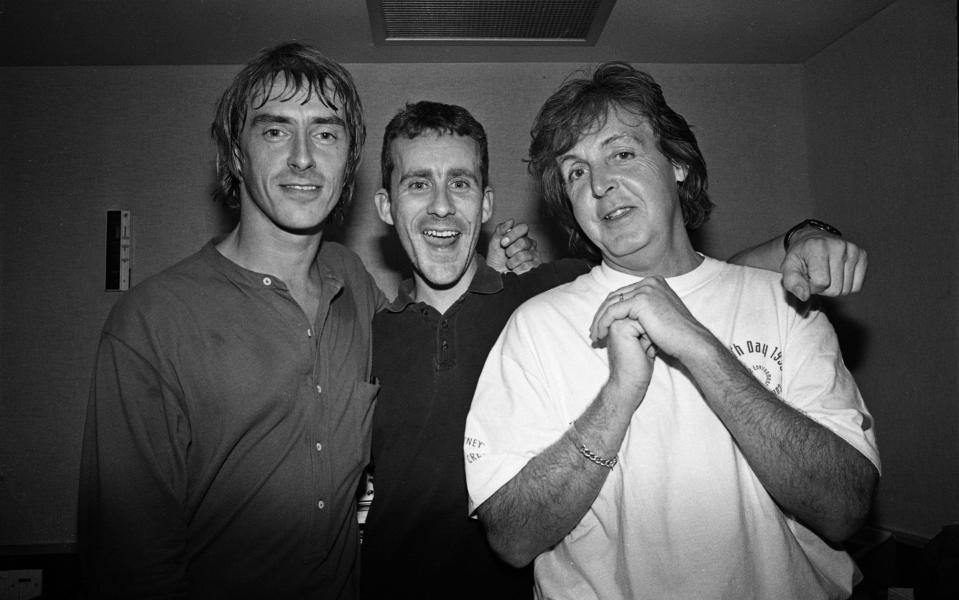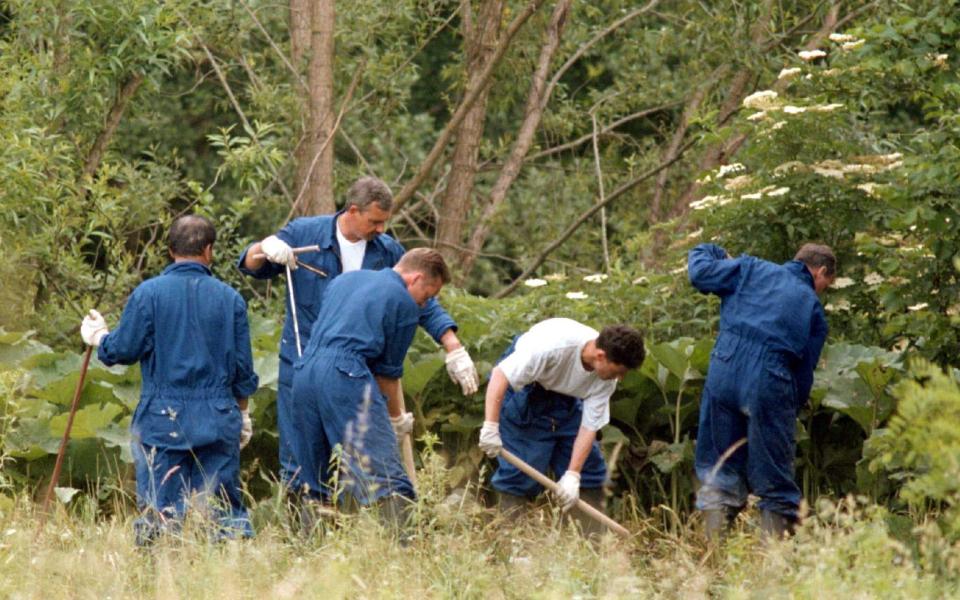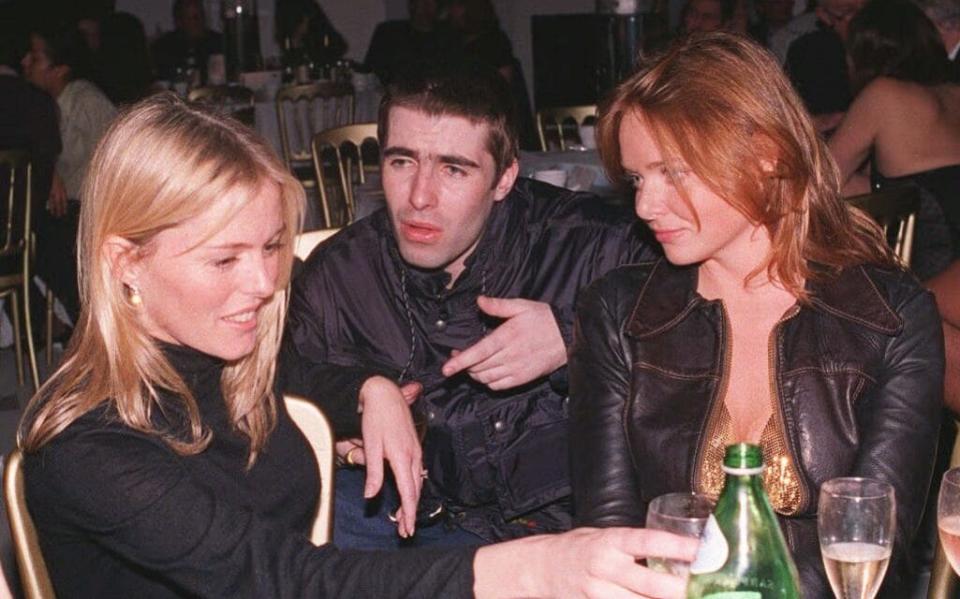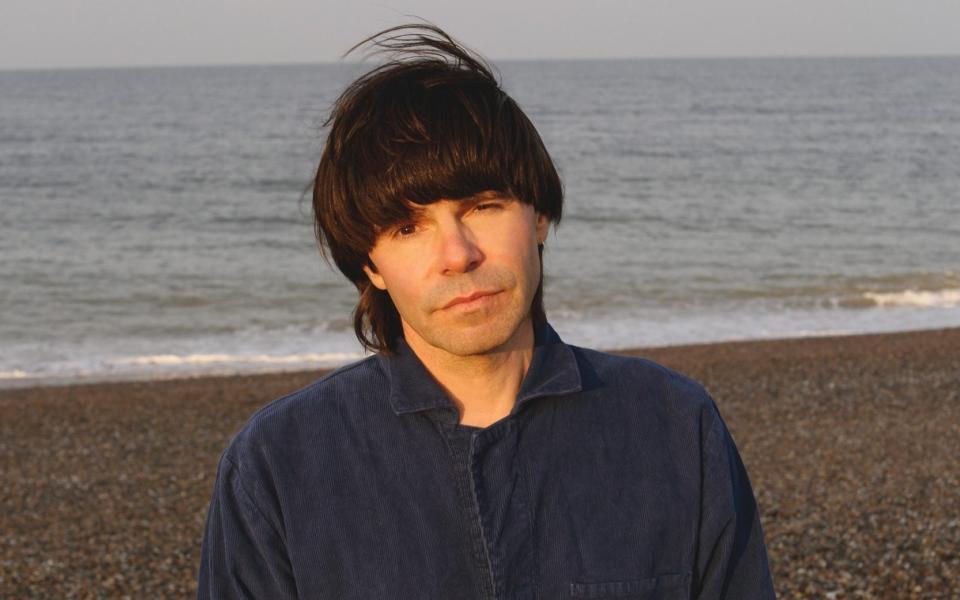‘I’ve no idea whose Rolodex Johnny Depp was on’: how the stars collided to make War Child’s Help

On the occasion of the 25th anniversary of the greatest musical charity event since Live Aid, Ed O’Brien remembers life in the former Yugoslavia, or at least a snapshot of it. In the Radiohead guitarist’s 1970s and 1980s childhood, he says, “my father took us on three consecutive cheap holidays [there]. It was like Greece or Italy. Then you heard about Srebrenica.”
As he puts it, “much of the early- to mid-1990s seemed to be defined by what was going on in the Balkans”, as the collapse of the Soviet bloc catalysed a multi-party civil war in that region. By the middle of 1995, the siege of Sarajevo, ethnic cleansing and (that July) mass murder in Srebrenica were seared into the consciousness of Britons. Genocidal killing was happening in former package-holiday destinations, only a 150-minute flight from the UK.
In London that summer, Tony Crean, a marketing manager at record label Go! Discs (home of Portishead and Paul Weller), watched the horrors unfolding on the nightly news. This was the summer of Peak Britpop – the Blur vs Oasis battle for the Number One slot made the Nine O’Clock News – and, like many of his peers, Crean had been happily caught up in the musical gold-rush. But, as he recently told Dorian Lynskey, this meant “not realising what was going on under my nose”.
Things changed after the massacre of more than 8,000 Bosnian Muslim men and boys, killed by Bosnian Serb forces led by Ratko Mladić. “Srebrenica was high in everybody’s mind,” recalls James Dean Bradfield, the Manic Street Preachers frontman. “Seeing people behind barbed wire fences, looking at their interminable fate – that echo down from European history, revisited in our time, was deeply disturbing.”
Crean began talking to peers and artists in the British music industry. What could they do to help? He spoke to a new charity, War Child, with which the producer and artist Brian Eno was involved. It had been founded in London in 1993 by British filmmakers Bill Leeson and David Wilson; shooting on the ground in the former Yugoslavia, they’d seen first-hand the brutality of the war, notably as it impacted on children and young people. In their first year they had run a convoy of equipment and food to the Balkans to establish a mobile bakery.

Terri Hall was one of those whom Crean contacted. She ran PR company Hall or Nothing, where her clients included the Manics, Radiohead and The Stone Roses. “It started off as an idea for a concert,” she recalls. But neither artists nor appropriate venues were available at such short notice. “So I said to Tony: ‘I come from managing producers, so I would know how to make a record.’ I was thinking of a Band Aid-type single. Then it just grew.”
And so Help was born. It was a fund-raising and awareness-heightening multi-artist compilation album, featuring the biggest acts of the day. They were united by a brilliantly simple idea, inspired by a John Lennon line about his 1970 solo single Instant Karma!, which went from conception to release in just 10 days. “The best record you can make,” Lennon said, “is recorded on a Monday, cut on Tuesday, pressed up on Wednesday, packaged on a Thursday, distributed on Friday, in the shops on Saturday.”
So, on September 4 1995, artists including Manic Street Preachers, Radiohead, Sinead O’Connor, Paul McCartney, Paul Weller, The Stone Roses, Portishead, Oasis, Orbital, Massive Attack, Neneh Cherry, The Charlatans, The Chemical Brothers and a dozen more besides – not to mention Johnny Depp and Kate Moss – entered studios around Europe.
It was a blockbuster line-up with a blockbuster mission: to record a brand new track that day and that day alone. Five days later – 25 years ago today – the results were released on the 20-track Help album. It was a logistical feat beyond the ken of today’s music fans and producers. With the internet and digital technology, songs can be made and distributed instantaneously. A quarter of a century ago, actual tapes had to be physically trucked (or flown) to pressing plants, often in different countries.
“My sister was working with the Manics, who were recording in Normandy,” says Hall. “They missed the ferry that their tape was meant to be on, so she was having a fit, trying to get it on a flight back from France. It was a physical effort, and really challenging. Back then, you couldn’t just wire or e-mail a track – it was planes, trains, boats, you name it.”
On that day itself, such concerns were far from the minds of most artists. For reasons he can’t fully annotate, Tim Burgess of The Charlatans recalls having to rendezvous in Nottingham with The Chemical Brothers, with whom the band had decided to partner on their contribution. They opted for a cover of Sly and the Family Stone’s appositely positive Time For Livin’, nixing an initial suggestion to record the (perhaps less germane) Silver Machine by Hawkwind.
“I can’t remember where we were the day before,” says the singer, “but I know the day after we were playing at The Boardwalk in Manchester to celebrate [self-titled album] The Charlatans going in at Number One.”
That perhaps explains one crucial detail of their recording session. “When we got to the studio in the morning, there were lots of journalists there, wanting to document it. And there was a delivery of Hooch there, ready for us!” he laughs, referring to the potent alcopop that was launched that year to boozy fanfare amongst the nation’s youth. “I don’t know whether that came from The Charlatans, but it probably did.
“So we started drinking that at 10 in the morning, as we often did then. And it was a 24-hour session… I did my vocals about four in the morning. So the vocals sound pretty… amped up! They do to me, anyway.”
Over in Sweden, Neneh Cherry was in a somewhat different mindset. “We were hanging out in Stockholm and working with the late, great Christian Falk,” she says of the Swedish producer who died in 2014. “Christian took us to the ABBA studio where the original ABBA keyboards were still housed and we decided to make the tune.”
“There, an old nursery rhyme came to mind and [1, 2, 3, 4, 5] was born. I figured: war is bad. Humans make too many wars – I'm so frightened by this default in some folks. Children do not fare well in a war. [So] help with this record.”
Then, in France, James Dean Bradfield was experiencing a different kind of stress. “Bear in mind this was an awkward time for us,” the Manics frontman begins. “We were about to go to Normandy to record with Mike Hedges on the album that would subsequently become Everything Must Go.
“We had this song in our pocket, called A Design For Life, which we thought was brilliant, but you never know for sure… And if we did this recording, it would be our first ever recording without Richey.”
The band’s guitarist, Richey Edwards, had disappeared on February 1 that year. (His body has never been found, and he was declared dead in November 2008.) Unsurprisingly, the rump trio’s first thoughts were that recording a new track for a charity album was the last thing they needed.
“We’d never recorded abroad before, and we were doing it without Richey, and we were traumatised because of what had happened to us as a band. We were flailing a bit. Basically, the existence of the band was very sketchy at that point. Are we a band? We don’t know. It was a very confused time for us.”
In the end, the band decided to record a track straight off the Eurostar, and use it as a “test” in the studio. Their song choice: a cover of Raindrops Keep Fallin’ on My Head. It was one of three left-field and powerfully moving covers on the album, alongside O’Connor’s version of Bobby Gentry’s Ode to Billie Joe and Suede’s take on Elvis Costello and Clive Langer’s Shipbuilding.
“We’re kids of the 1970s, and we all had the same cultural touchstones – Butch Cassidy and the Sundance Kid being one of them, because we all loved the blaze-of-glory ending,” Bradfield explains. “And I’d been covering that song in the live set for a year and a half. By that time, Nicky and Richey wanted a break in the set so they could go and redo their make-up, because they sweated so much. So I started doing Raindrops.”
Geoff Barrow of Portishead admits that the reasons for their song choice, Mourning Air, were even more prosaic. He also cops to a little needs-must jiggery-pokery.
“To be absolutely honest, if we’d had to write a track, we’d never have been able to do it,” he says. “But we had a demo of a song that was supposed to go on the end-credits of a film called Strange Days,” he says of the Kathryn Bigelow-directed sci-fi thriller that starred Ralph Fiennes and Juliette Lewis. “But they didn’t use it in the end – they used something by Skunk Anansie! That was my first taste of Hollywood’s absolute b--tardry!”
Still, Hollywood’s skulduggery meant that Portishead were almost ready to go when the call came. “We just needed to do more of a proper vocal, and some other bits and bobs. So it was pretty together, but we just pretended we’d recorded it all on the day. But obviously we wanted to be part of it. There were some good people on there, but the cause and the reasons behind it were absolutely shocking.”
Barrow made his feelings known more strongly in Portishead’s contribution to an accompanying Help TV documentary, made by Malcolm Gerrie, creator of The Tube.
“We weren’t keen on appearing on it, but we said: can we deliver something? So I went down to a mate’s edit suite and took a load of footage of Bosnia and Croatia from Wish You Were Here” – yes, he means the Judith Chalmers-fronted holiday travel show – “and then added some really hardcore war footage from the time. So they played that film as our piece on the TV show.”

Talking to BBC 6 Music’s Matt Everitt for a new podcast, commissioned by War Child, about the making of Help, Paul Weller remembers a very different surreality: recording a version of The Beatles’ Come Together with Noel Gallagher and, more pertinently, one of his heroes.
“It was like a sort of childhood dream becoming realised,” he remembers. “It was far-out enough that we were in The Beatles’ Number Two studio in Abbey Road. But then Paul McCartney came down and played on the track as well.” Acknowledging the enormity of the cause, Weller admits that, musically, “it doesn’t really get too much better for me than that”.
McCartney felt the same, as he relays to me via his publicist: “It was really exciting to come together to record Come Together with Noel Gallagher and Paul Weller as The Smokin’ Mojo Filters. It was a fun session at Abbey Road for a great cause.”
Still, it wasn’t the most surreal moment of Help day. That honour falls to the project’s other supergroup, which also featured Gallagher. Oasis and Friends comprised the band, plus supermodel Kate Moss and her then-boyfriend Johnny Depp. How on earth did that come about? Terri Hall admits to confusion to this day.
“Kate Moss was just around in the Britpop era, wasn’t she? And then Johnny Depp – I’ve no idea whose Rolodex he was on! Towards the end, Tony and I sat in the car at Abbey Road and went: ‘Did that just happen?’”
But they weren’t done yet. All those songs then had to be then assembled into a proper album. Hall was at The Townhouse studio in west London with Brian Eno, who was tasked with actually assembling the album. “To master an album, you have to equalise it and make sure it sounds like a record – in this case, on the spot, on the day. And doing this with tracks from studios around Europe and around the country.
“So it was a case of: ‘Oh, here’s The Stone Roses track, let’s get the levels right… Oh, here’s Stereo MCs… And they were just arriving all day. So he was one of the heroes to me, because that’s no mean feat.”

And then there was Radiohead’s contribution. Only six months after the release of their breakthrough album The Bends, the band gifted the endeavour a brand new track, called Lucky.
“We were on tour in Japan and Thom [Yorke] had written this song,” says O’Brien of the song’s creation. “And at that time, a lot of our soundchecks were [about] playing new material. And it just came together very quickly. It had Jonny [Greenwood] playing a Pink Floyd guitar line, and it’s an emotional song.”
They then recorded the song in a studio in central London, “a real pop studio – I think Take That had been in there, and ABBA at some point. It wasn’t the kind of studio we were used to, put it that way! It was pretty shiny.”
I saw Radiohead 11 days after the release of Help, at the Dallas Starplex Amphitheatre in Texas as they supported REM on their Monster tour. It was an eight-song set, and Lucky was already at the heart of it, with High and Dry and Creep on either side. It was already a totemic song for Radiohead, and would appear, in its Help incarnation, on OK Computer two years later.
“If you take it out of the context of Help, it was also a really important track for us,” notes O’Brien, “because it was a transitional track from The Bends into OK Computer. And when we came to do the tracklisting for OK Computer, we were aware that a lot of people round the world hadn’t heard Lucky, because Help was a UK-only release. It wasn’t even played on Radio 1.
“So it was part of this new body of work, and it was the first track for OK Computer, without us realising it.” And yet they’d given it away? “I don’t think there was every any discussion of: ‘Should we save Lucky?’ It was a case of: this is the best new song we have at the moment, it’ll be brilliant to go and record it, this cause is a no-brainer to get involved with.”
Twenty-five years ago today, Help – wrapped in sleeve artwork created by John Squire of The Stone Roses and Massive Attack’s 3D but made so fast that there was no time to include a tracklisting – sold 70,000 copies in 24 hours. It should have been Number One, were it not disqualified by rules barring multi-artist albums from being counted in the chart placings.
At that November’s Q Awards, Tony Blair presented a special award to War Child, saying: “At a time when there was a danger of the West turning its back on the war in Bosnia, [the album] helped put it back in the headlines and reactivate public interest. It helped us be aware of our responsibilities to other people."
At the Brit Awards the following February, Help was honoured again – the same night, incidentally, that Jarvis Cocker waggled his rear at Michael Jackson. As Thom Yorke said at the Brits ceremony: “For one day last year, we all stopped fighting and actually did something decent for once.”
Help went on to raise £1.25 million, over six times the amount for which the organisers had hoped. In the words of Rob Williams, CEO of War Child UK: “The Help album enabled War Child UK to bring security and education to thousands of children in 1995, and created an enduring bond between the UK music industry and the fate of children caught up in wars.
“Since then War Child UK has developed into a global charity, helping over 1.5 million children to recover from the trauma of war, get access to education and move on to productive adult lives. We draw our strength from the musicians, artist and donors who came together around the Help album in 1995.”
The effects rippled out sideways, too, with an added political edge. Bill Drummond of The KLF tells me of the inspiring afterlife of The Magnificent, the contribution that he and Jimmy Cauty made under the name The One World Orchestra, featuring The Massed Pipes and Drums of the Children’s Free Revolutionary Volunteer Guards.
“We were proud of the fact that [the track] got picked up by Radio B92 in Belgrade,” he says, “and sort of became an anthem for the underground movement in Serbia against the Milosevic regime.”

The last word goes to Tim Burgess. Tonight, he’s hosting online a special Help edition of his hugely popular Tim’s Twitter Listening Party, featuring tweeted contributions from a handful of the artists involved.
Yes, the Britpop mid-1990s were a time of success, excess and no-little debauchery. But it was also a time when what used to be known as “alternative music” took over the mainstream. Help, then, both encapsulates a boom time for British music – albeit one that was largely male, white and guitar-shaped – and also stands as a corrective to the more hedonistic tenor of the times.
As The Charlatans frontman observes, “It was the humanity that drove everyone to do it. Certainly in our camp there was a slogan: it’s cool to care. That felt like the phrase of the day.
“And I got to meet Brian Eno,” he adds, ever the fan, with a smile. “He wrote on my hand. And I’ve still never washed it.”
War Child re-releases Help today, on limited vinyl (2,020 copies) and on streaming services for the first time. Help: The Story of the War Child Album is available on all podcast platforms. The Help special is at 9pm: see timstwitterlisteningparty.com

